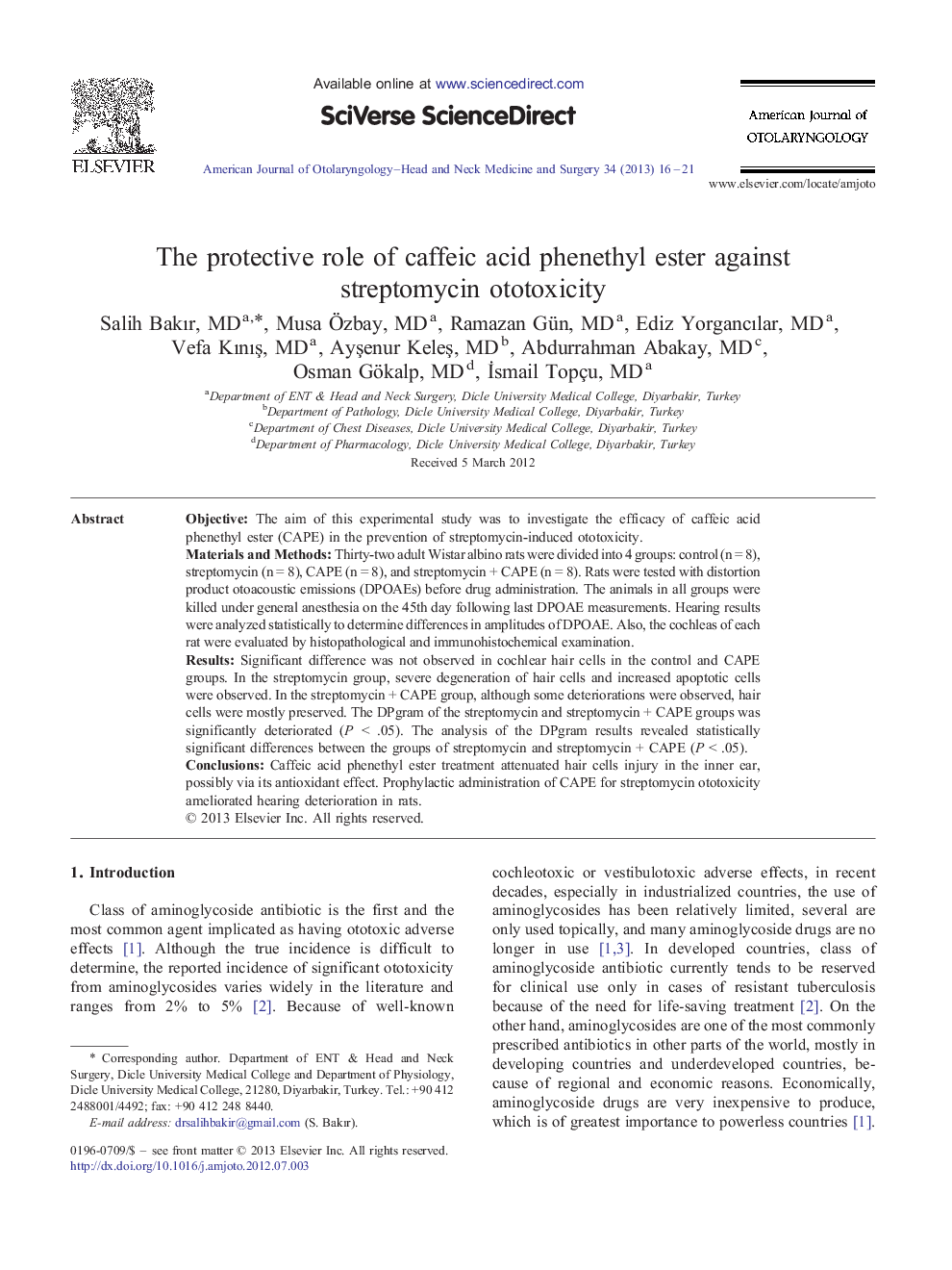| Article ID | Journal | Published Year | Pages | File Type |
|---|---|---|---|---|
| 4103908 | American Journal of Otolaryngology | 2013 | 6 Pages |
ObjectiveThe aim of this experimental study was to investigate the efficacy of caffeic acid phenethyl ester (CAPE) in the prevention of streptomycin-induced ototoxicity.Materials and MethodsThirty-two adult Wistar albino rats were divided into 4 groups: control (n = 8), streptomycin (n = 8), CAPE (n = 8), and streptomycin + CAPE (n = 8). Rats were tested with distortion product otoacoustic emissions (DPOAEs) before drug administration. The animals in all groups were killed under general anesthesia on the 45th day following last DPOAE measurements. Hearing results were analyzed statistically to determine differences in amplitudes of DPOAE. Also, the cochleas of each rat were evaluated by histopathological and immunohistochemical examination.ResultsSignificant difference was not observed in cochlear hair cells in the control and CAPE groups. In the streptomycin group, severe degeneration of hair cells and increased apoptotic cells were observed. In the streptomycin + CAPE group, although some deteriorations were observed, hair cells were mostly preserved. The DPgram of the streptomycin and streptomycin + CAPE groups was significantly deteriorated (P < .05). The analysis of the DPgram results revealed statistically significant differences between the groups of streptomycin and streptomycin + CAPE (P < .05).ConclusionsCaffeic acid phenethyl ester treatment attenuated hair cells injury in the inner ear, possibly via its antioxidant effect. Prophylactic administration of CAPE for streptomycin ototoxicity ameliorated hearing deterioration in rats.
